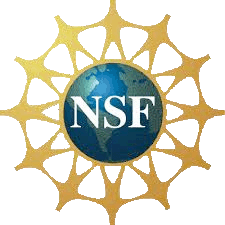
Resources: The Need for Self-Assembly
 |
We Can Figure This Out.org
Resources: The Need for Self-Assembly |
|
| > WCFTO Home > Nano Home > Resources: The Need for Self-Assembly | ||||
|
PowerPoint Lecture Notes: The Need for Self-Assembly University of Wisconsin MRSEC Movies on Self-Assembly: Movies on self-assembly from the "Interdisciplinary Education Group" of the NSF Materials Research Science and Engineering Center (MRSEC). Web source:http://www.mrsec.wisc.edu/Edetc/cineplex/self/text.html "Self-assembly of 5 micrometer glass nanospheres on a mica surface. The spheres are initially suspended in a drop of
water on the mica. As the drop evaporates, the spheres are packed together by the surface tension at the drop's edge.
Slight irregularities in the packing can be seen, and are the result of irregularly shaped spheres. (300K) Movie by
Gordon Shaw."
"Triangles, made of polydimethylsiloxane with magnetized strontium ferrite along the edges, self assemble on the
surface of water. The different color triangles are oppositely magnetized so they are expected to have the strongest
attractions. The dish and camera are moved circularly to produce a wave that moves the pieces. The movie plays in
real time." Movie by G.C. Lisensky
Note: This is only the first 60 seconds of the original eight minute movie. Virtual Lab: Atomic Crystal Growth using Molecular Beam Epitaxy: Ultra-high vacuum Molecular Beam Epitaxy (MBE) growth of GeSi atomic layers Source: Virtual Lab https://WeCanFigureThisOut.org/VL/MBE.htm Virtual Lab Simulations of "Quantum Cellular Automata" Electronic Device Building Blocks:
How Natural Atomic Self-Assembly Could form Quantum Cellular Automata Structures:
STEP 3) Expanded Ge around valley then closer to natural spacing's of Ge atoms. It thus attracts subsequently deposited Ge atoms growing “Quantum Fortress” walls. Under the proper choice of growth conditions, quantum forces are indeed observed for GeSi growth, as shown by the atomic force micrographs shown in the lecture notes for this class.
Self-Assembly of Gold Nano Particles: CytImmune's solution growth of gold nanoparticles for possible targeted delivery of cancer treatment drugs. CytImmune Inc. "technology" webpage containing the above animation (click here) Scripps Model of Virus Shell Self-Assembly: Web source: http://mgl.scripps.edu/projects/tangible_models/movies
"Autocell Project" YouTube Web Videos - Apparently of the Same Viral Self-Assembly Process:
|